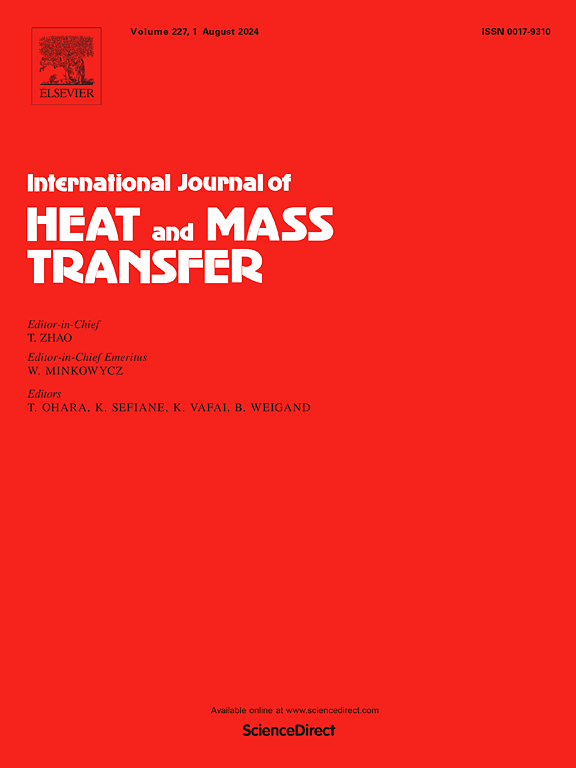使用迷你/微通道的电动汽车电池热管理:策略、挑战和未来前景的关键回顾
IF 5
2区 工程技术
Q1 ENGINEERING, MECHANICAL
International Journal of Heat and Mass Transfer
Pub Date : 2025-06-25
DOI:10.1016/j.ijheatmasstransfer.2025.127355
引用次数: 0
摘要
锂离子电池(LIBs)是现代电动汽车的关键部件之一。为lib保持适当的温度范围是很重要的。因此,电池热管理系统(btms)在确保锂离子电池的最佳性能方面发挥着重要作用。在过去的几年里,大量的学者研究了在btms中结合液体冷却系统使用微型和微型通道。这是由于这些通道的高热性能。此外,还有许多迷你/微通道的配置,研究了各种相关参数。此外,在这些研究中还采用了不同类型的冷却介质。他们研究工作的主要目的是控制和保持LIB的温度在特定的工作范围内,同时考虑LIB电池之间的最高温度和温差。最近,树突通道被用于btms,因为这些通道允许低流动阻力,并减少能量消耗。这些树突通道包括树状、叶脉状、蜂窝状、蜘蛛网状和血管状结构,它们的灵感来自大自然。鉴于此,本文对采用微型/微型和树突状通道冷却电动汽车电池的btms进行了全面的综述。本文章由计算机程序翻译,如有差异,请以英文原文为准。
Thermal management for electric vehicle batteries using mini/micro-channels: A critical review of strategies, challenges, and future prospects
Lithium-ion batteries (LIBs) are vital and one of the most crucial components of modern electric vehicles. Maintaining an appropriate temperature range for LIBs is important. Accordingly, battery thermal management systems (BTMSs) play a significant role in ensuring the optimal performance of LIBs. Over the course of the last several years, a significant number of academics have researched the use of mini- and micro-channels in BTMSs in combination with liquid cooling systems. This is due to the high thermal performance of these channels. Also, there are numerous configurations of mini/micro-channels, that are investigated with various related parameters. Moreover, different types of cooling media have also been employed in these research studies. The main aim of their research work is to control and maintain the temperature of LIBs within a specific operating range, considering both the maximum temperature and temperature difference between LIB cells. Recently, dendritic channels have been used in BTMSs since these channels allow low flow resistance, and reduce the energy consumption. These dendritic channels include tree-like, leaf-vein-like, honeycomb-like, spider-web-like, and blood-vessel-type structures, that are inspired from nature. In view of this, the proposed paper presents a comprehensive review of BTMSs that employ mini/micro and dendritic channels for cooling electric vehicle batteries.
求助全文
通过发布文献求助,成功后即可免费获取论文全文。
去求助
来源期刊
CiteScore
10.30
自引率
13.50%
发文量
1319
审稿时长
41 days
期刊介绍:
International Journal of Heat and Mass Transfer is the vehicle for the exchange of basic ideas in heat and mass transfer between research workers and engineers throughout the world. It focuses on both analytical and experimental research, with an emphasis on contributions which increase the basic understanding of transfer processes and their application to engineering problems.
Topics include:
-New methods of measuring and/or correlating transport-property data
-Energy engineering
-Environmental applications of heat and/or mass transfer

 求助内容:
求助内容: 应助结果提醒方式:
应助结果提醒方式:


